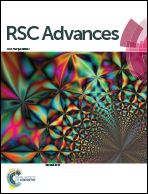Adsorption activity of coconut (Cocos nucifera L.) cake dietary fibers: effect of acidic treatment, cellulase hydrolysis, particle size and pH
Abstract
The effects of acidic treatment, cellulase hydrolysis, particle size distribution and pH on the adsorption capacity of defatted coconut cake dietary fibers (DCCDF) were studied. The results demonstrated that cellulase hydrolysis could significantly improve the soluble dietary fiber content, water holding ability and adsorption ability of DCCDF on cholesterol, bile and nitrite ions. Acidic treatment enhanced the oil holding capacity and adsorption ability in cholesterol and nitrite ions. Moreover, the adsorption ability of DFs in cholesterol, nitrite and bile all increased with reduced particle size (250 to 167 μm), and DCCDF demonstrated a higher adsorption capacity at pH 2.0 than at pH 7.0. The change in adsorption capacity of DCCDF might be suitable for application in the food industry as a low-calorie and cholesterol lowering functional ingredient.



 Please wait while we load your content...
Please wait while we load your content...